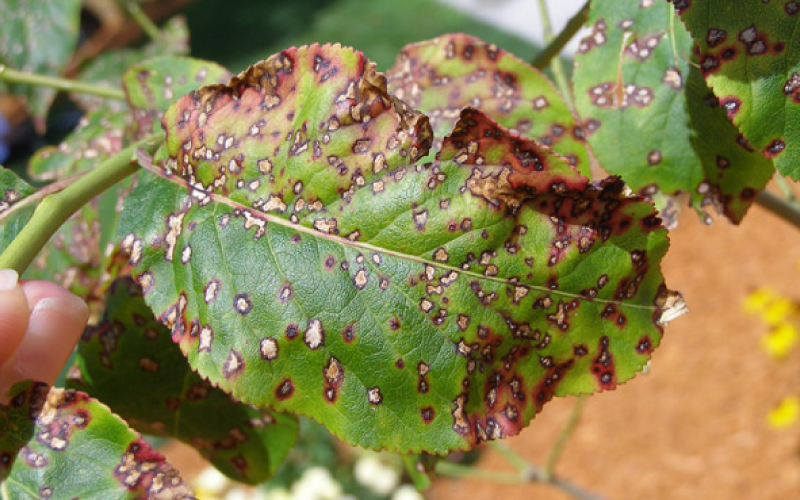Spots, blotches, holes on leaves, as well as early leaf and needle drop are all signs and symptoms of leaf and needle diseases on trees and shrubs. This is not a new phenomenon in our landscape, however due to several factors, these diseases appear to be more prevalent. To understand the rise of plant pathogens, and what we can do to minimize associated damage in our landscapes, it helps to consider the Disease Triangle.
Picture a triangle with the following labels at each corner: Plant Host, Plant Pathogen, and Environment. For a disease to successfully take hold and result in damage to a plant, all three need to be aligned in the same space at the proper time. If a plant disease and a susceptible plant are present but the environmental conditions are not conducive for the disease to establish, little or no damage results on the host plant. If the disease is present and the environment is just right for spread, but the host plant is not present, nothing happens. And finally, if the host plant is present and the environmental conditions are conducive for disease spread, but there are no pathogens present, then the host plant will not be damaged.
Understanding the disease triangle and the relationship between the three factors is crucial in our work to maintain and promote healthy plants in our landscape. When we can disrupt, remove, or avoid one of the factors, we break the triangle.
Here are a few examples of this:
- When it comes to planting new trees, avoid species that are susceptible to common diseases. These species include Flowering dogwood, ornamental pear, crabapple, common lilac, blue spruce, and Douglas fir.
- When planting new trees that have a history of disease susceptibility, choose newer, resistant cultivars.
- When planting new tree species susceptible to disease, restrict them to locations with good airflow and full sun with the goal of reducing wet environmental conditions conducive to disease.
- Treat important trees and shrubs that have chronic leaf and needle disease issues with a series of fungicide spray applications. NOTE: It is crucial to maintain a fungicide program every year as the fungal spores that infect plants are airborne every year.
- Take care not to introduce diseases to your landscape when installing new plants. This is especially true for roses and boxwood. Both carry relatively new invasive diseases that are very damaging.
- Work to diversify the species in your landscape. Our reliance on a relatively small selection of ornamental and agricultural plants has made them a reliable host for diseases over hundreds of years. Diversity is the key to limiting the scope of damage in the wet cool season when leaf and needle diseases proliferate.
If you have questions or concerns about disease issues affecting your landscape plants, please Contact Us. One of our certified arborists will be glad to visit it with you and inspect your plants.



